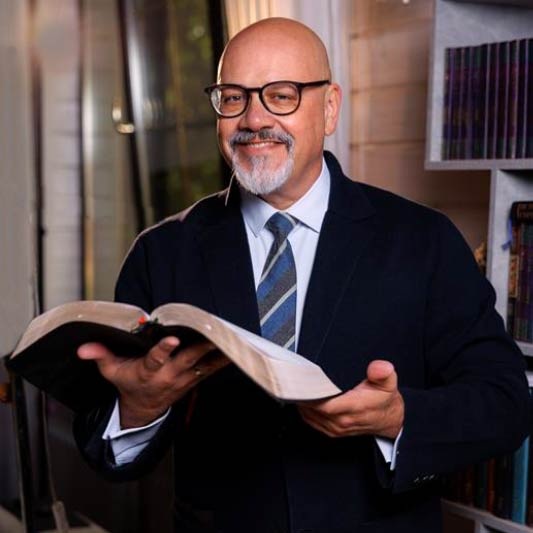
About 10 years ago I had a seismic shift in how I understood the Apostle Paul. Like many, I’d grown used to his contradictions, chalking them up as divine mysteries I’d never crack. That worked for a while, but eventually, a nagging sense hit me hard: I was missing something massive. I’d read Paul sporadically, and the iconic verses I memorized decades ago still shaped my life. But honestly, I dodged wrestling with him. My relationship with Paul? Strained, at best. His logic seemed contradictory, even scandalous, and I couldn’t follow it. When I spoke about him publicly—usually on Romans 11—I’d lean on Apostle Peter’s quip that Paul’s letters were “hard to understand” (2 Peter 3:16). That was my cop-out. But that chapter’s closed. A breakthrough came, and a deeper connection with Paul replaced the confusion. I owe this to Mark Nanos, a Reform Jew with a deep interest in the historical Paul. Though we differ on Jesus’ identity and Paul’s claims about Him, we align almost entirely on who Paul was, the core of his theology, and how it shaped every letter he wrote to the Nations. For two Jews to agree on that much is no small feat. More on that soon.
Shema and Henotheism
A century ago, scholars coined terms to clarify ancient views of the divine: monotheism, polytheism, and henotheism. Monotheism insists one god exists. Polytheism embraces multiple gods. Henotheism, the dominant ancient view, acknowledges many gods but exalts one as supreme—God of gods, Lord of lords. This is the lens for understanding most of the Hebrew Bible and New Testament.
Unlike today’s world, where debates center on which interpretation of God to follow (Judaism, Christianity, Islam), ancients in a henotheistic world obsessed over which of countless heavenly beings deserved total devotion. The Ten Commandments (or Ten Words in Jewish tradition) didn’t deny other gods’ existence; they forbade worshiping them alongside Israel’s God, יהוה (YHWH), the unpronounceable holy name. The Hebrew Bible assumes other gods exist but demands Israel’s exclusive loyalty to YHWH. Consider these:
“You shall have no other gods before me” (Ex. 20:3).
“For the Lord is the great God, and the great King above all gods” (Ps. 95:3).
“Worship Him, all you gods” (Ps. 97:7).
“Who is like You among the gods, O Lord?” (Ex. 15:11).
In today’s Jewish tradition, the Shema is not just important—it’s central. As we’ll see, it was for Paul too. Deuteronomy 6:4 declares:
שְׁמַע יִשְׂרָאֵל יהוה אֱלֹהֵינוּ יהוה אֶחָד
Shema Yisrael, Adonai Eloheinu, Adonai echad
Hear, O Israel! The Lord is our God, the Lord is one
Shema, Trinity, and Metatron
To grasp Paul’s New Testament claims, we need a Jewish lens on Christian theology. Some modern Christians, emphasizing the New Testament’s Jewish roots, note that the Shema uses echad (plural unity) instead of yachid (exclusive oneness), suggesting it hints at the Trinity—God as Father, Son, and Holy Spirit. I define Trinity like this: Israel’s one God exists eternally in three persons, equal in nature, power, and glory (Ontological Trinity), though the Son and Spirit are functionally subordinate to the Father (Economic Trinity). This later Christian construct (2nd–3rd century CE) has roots in the Hebrew Bible and New Testament. (For more, see my book, The Jewish Gospel of John: Discovering Jesus, King of All Israel.)
This Trinity debate, though, is a modern fixation. Ancient Israelites didn’t wrestle with Trinitarian ideas. They did ponder divine plurality, but in a binary sense (Father and Son), as in Daniel 7:9–14. Rabbinic texts, like those about the “Angel Metatron” (a Jewish counterpart to the Christian “Angel of the Lord”), reflect this. Metatron is called a “lesser YHWH” in 3 Enoch 12:1–5 and depicted seated in heaven, causing theological tension (Talmud, Hagigah 14b–15b). Rabbinic Judaism downgraded Daniel from “Prophets” to “Writings” partly to counter early Christian use, unlike the Septuagint (LXX), which placed Daniel among Prophets.
Shema and Paul
The real question isn’t how we interpret the Shema, but how Paul did. For him, it encapsulated two ideas:
- Israel’s covenantal uniqueness (“The Lord is our God”)
- Future unity of Israel and the Nations (“The Lord is one”).
Paul’s world wasn’t monotheistic like ours, shaped by Abrahamic faiths. Ancients found monotheism strange. Mark Nanos, in Paul and the Jewish Tradition: The Ideology of the Shema, argues the Shema was central to Paul’s gospel. Paul saw it as affirming Israel’s distinct role and the eventual unity of Israel and the Nations under one God. He wasn’t alone. Other Jewish thinkers, then and later, shared this view, often citing Zechariah 14:9:
“The Lord, our God,” over Israel; “the Lord is one,” over all creation (Sifre on Deut. 6:4, 3rd century CE).
“The Lord who is our God now, but not yet the God of the nations, will be the One Lord” (Rashi on Deut. 6:4, 11th century CE).
The key difference? Paul and early Jewish Jesus-followers believed the “latter days” of Nations joining Israel’s God had begun. Most Jews said, “Not yet.” Paul’s apocalyptic view—believing the end of ages had dawned—drove his conviction that Gentiles, through Jesus the Messiah, were joining Israel’s God without becoming Jews. This led the Jerusalem Council (Acts 15) to reject requiring Gentile conversion to Judaism, unlike the Ruth paradigm (Ruth 1:16). Gentiles could remain Gentiles, like Naaman (2 Kings 5), worshiping Israel’s God fully.
Nanos suggests Paul’s “Gentile churches” were Jewish coalitions of non-Jews following Jesus. “Jewish” describes behavior (Judaism), while “Jews” are those born Jewish or converted. This distinction is critical.
The Shema as the Heart of Paul’s Theology
Why did Paul, a Torah-observant Pharisee, insist Gentiles in the Jewish coalition avoid proselyte conversion? Simple: he believed the resurrection of Jesus as Messiah marked the age when Israel’s God became God of all—Israel and the Nations. In Romans 3:29–31, Paul writes:
“Is God the God of Jews only? Is He not the God of the Nations also? Yes, of the Nations also, since indeed God who will justify the circumcised by faith and the uncircumcised through faith is ONE. Do we then nullify the Torah through faith? May it never be! On the contrary, we establish the Torah.”
For Paul, the Shema meant God’s rule over both groups, justifying circumcised (Israel) and uncircumcised (Nations). This validated the Torah. “Circumcision” symbolized full Jewish conversion; “Shema” encapsulated Torah’s essence. The Shema’s oneness drives Paul’s theology elsewhere, like Ephesians 3:16–19, where he prays for Gentile believers to grasp Christ’s love alongside Jews, or 1 Corinthians 8:4–6, acknowledging many “gods” but affirming one God and one Lord, Jesus.
Paul’s vision, echoed in Acts 15:28–29, aligned with Leviticus 17–21, allowing Gentiles to worship Israel’s God as Gentiles. Jews continued as Jews. Both groups, through faith in Jesus, upheld the Torah, proving it true. Paul’s rule—no status change (1 Cor. 7:17–20)—ensured this. Circumcision or uncircumcision didn’t matter; obeying God’s commands did. Conversion threatened the Torah’s truth: if Gentiles became Jews, God wouldn’t be recognized as God of all.
Paul’s Radical Jewish Vision
Paul’s conviction that the time for joint worship had arrived set him apart. Most Jews awaited that day; Paul believed it was here. This drove his mission: Jews and Gentiles, distinct yet united, worshiping one God through Jesus. Nanos’ framework reveals Paul as a Torah-observant Jew, not a founder of a new religion. His churches were Jewish spaces for Gentiles, fulfilling the Shema’s promise. Understanding this transforms how we read Paul, resolving his “contradictions” and revealing a coherent, radically Jewish theology centered on the Shema.






Okay, this is the first time I am on my laptop making these comments.
Again, this article is massive good. Thank you, Dr. Eli. Could “henotheism” be discussed a bit further here? Not only is He above the “other gods,” but there is No other! He is the ONLY One True Living Lord G-d on high. It’s monotheism still and ever. Oh, it appears I’m the one who just discussed this a bit further. Hahaha. I rejoice, thank, and praise Him above! Who is rejoicing for the LORD with me? Blessings to you all!
It is a mistake to think that in the minds of the ancients Jews Israel’s God was the only god out there. He was the ONLY ONE for THEM.
“I am the LORD, and there is no other; apart from me there is no God…”
-Isaiah 45:5a
Right, there were many people groups with many gods or other gods (false gods). That’s why the One True Living Lord God gave Dt 6:4, right? So, henotheism says other gods actually do exist but that the G-d of Abraham, Isaac and Jacob is the only One for Israel and the “grafted in” nations?
Thanks, Dr. Eli!
Yes. But again gods/Gods in ancient including Biblical definition do not correlate to how we generally use this word.